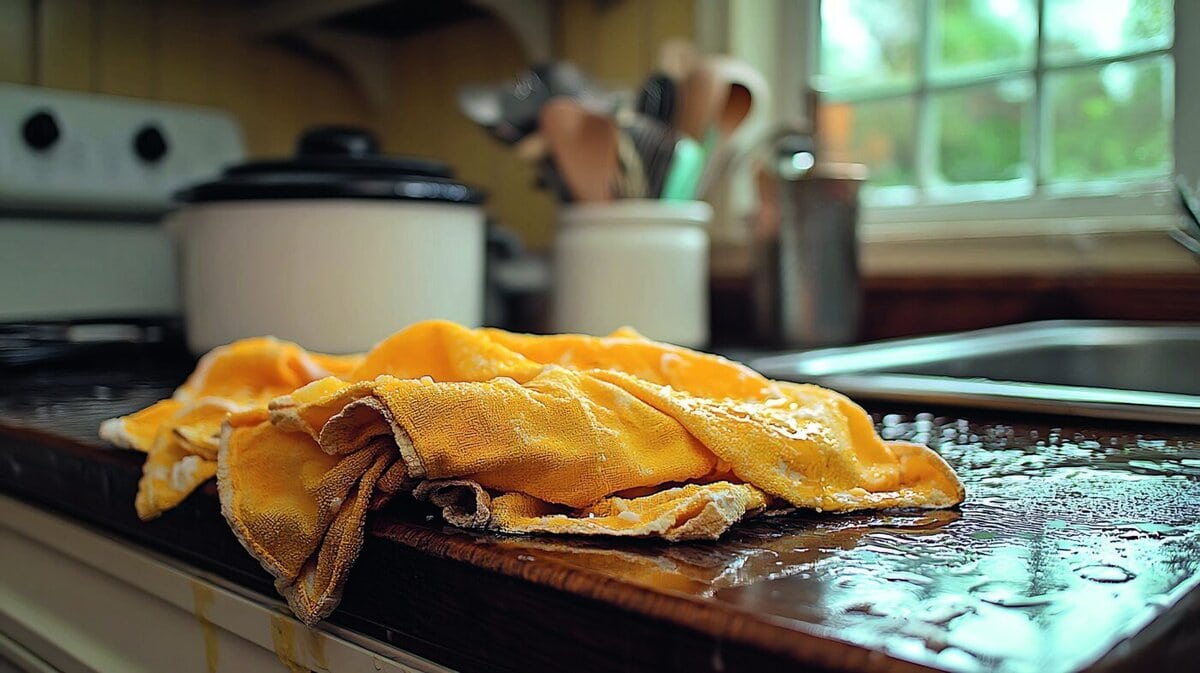Beware of spontaneous combustion!
It does not happen often, but it is all the more surprising, and the damage can be considerable: Materials ignite all by themselves. What sounds like a horror movie or esoteric weirdness has a solid chemical explanation.

The fact that a fire starts by itself - without an ignition source or external energy supply - is the exception and therefore initially seems implausible. Reports circulating in esoteric circles of people suddenly bursting into flames, so-called spontaneous human combustion, are a myth. However, there are indeed substances and stored goods that can spontaneously heat up, ignite and set their surroundings on fire under certain circumstances.
Cases of damage caused by unexpected spontaneous combustion also occur in companies and businesses. Burning tumble dryers in restaurants and canteens or burning hot ironers in laundries and hotels are proof of this. Haystacks or storage facilities with wood chips are also at risk. There can also be a risk of spontaneous combustion in technical installations. For example, the fire in an industrial oil mill was attributed to the spontaneous combustion of oilseed cake. This solid residue from the cold pressing of oilseeds such as rapeseed, linseed or sunflowers had heated up in a self-heating process, the heat built up and the fire led to sooting of the entire plant.
Oxidative processes
Biologists and chemists can already guess the typical causes of spontaneous combustion from the examples given. This is because it is usually oxidative processes - chemical or biological - that lead to heating. If the heat cannot be dissipated at the point of origin, the temperature continues to rise. If the ignition temperature of the substance in question is reached, the substance catches fire.
There is a particular risk of spontaneous combustion with the following groups of substances:
- Solids with a large surface area, i.e. in finely dispersed or dusty form, e.g. the chips and powders of many metals (nickel, cobalt, iron, titanium, lead, magnesium, etc.), such as those used for 3D printing processes
- Textiles soaked with oil or grease such as cleaning cloths, wiping cloths, sponges, brushes, polishing pads etc., also heavily grease-soiled dishcloths and cleaning cloths from the catering trade
- Metallic soaps (salts of fatty acids) used as release agents, catalysts or binders, e.g. for polymerizing paints so that they dry faster
- organic materials such as hay, wood shavings or wood pellets that are not sufficiently dried
The last example is feared in agriculture, but is often underestimated by laypeople. For example, there are known cases where grass clippings from a lawnmower have set fire to an organic waste garbage can left in the blazing sun.
Caution with oil-soiled textiles
Vegetable oils with unsaturated fatty acids, which are popular for oiling garden chairs or wooden floors, for example, are particularly sensitive because they are widely used in private households and many companies. The oil-soaked textile materials that are produced in the process, but also when cleaning kitchen appliances, pans, deep fryers, etc., tend to self-heat. In the case of linseed oil, the reaction can start at room temperature. Other oils, such as rapeseed oil, first require a certain amount of activation energy, e.g. by heating in a tumble dryer. The risk is highest with unsaturated vegetable oils with a low flash point. Chemists recognize the self-ignition tendency of fats and oils by their iodine number, which reflects the content of unsaturated compounds.
In addition to this biochemical prerequisite, the Institute for Loss Prevention of Public Insurers mentions two boundary conditions for the risk of self-heating:
- The oils or greases must be applied to a large surface, as is often the case after cleaning and wiping.
- The textile must be so well insulated that the heat released cannot be dissipated into the environment.
It is therefore always dangerous if an oil-soaked cloth is simply crumpled up and stuffed into a closed container with other (and possibly flammable) waste. If it is very dirty, greasy residues can still adhere to a textile fabric even after washing. If the cloth is then heated in the tumble dryer or only folded tightly, the autoxidative process can begin unnoticed. It is always crucial that the heat cannot build up, which is why items at risk must be ventilated as well as possible.
Avoid heat build-up
The good news is that a fire caused by spontaneous combustion of textile materials can be prevented with comparatively little effort. Clear rules should apply to all textiles soiled with oils or fats, whether they are mops in the catering trade or cleaning wool in industry and trade:
- Do not leave them lying around carelessly crumpled up.
- Allow to air dry, never on a radiator or a hot surface, preferably outdoors.
- Alternatively, immerse completely in water.
- Always dispose of in closed and incombustible containers.
Freshly dried textiles with the risk of greasy residual soiling should not be folded together in tight packs while still warm or hot, but should be allowed to cool down first. Last but not least, it should go without saying that smoking should never be allowed even in the immediate vicinity when a colleague is working with oils, varnishes, paints, turpentine or similar substances.









